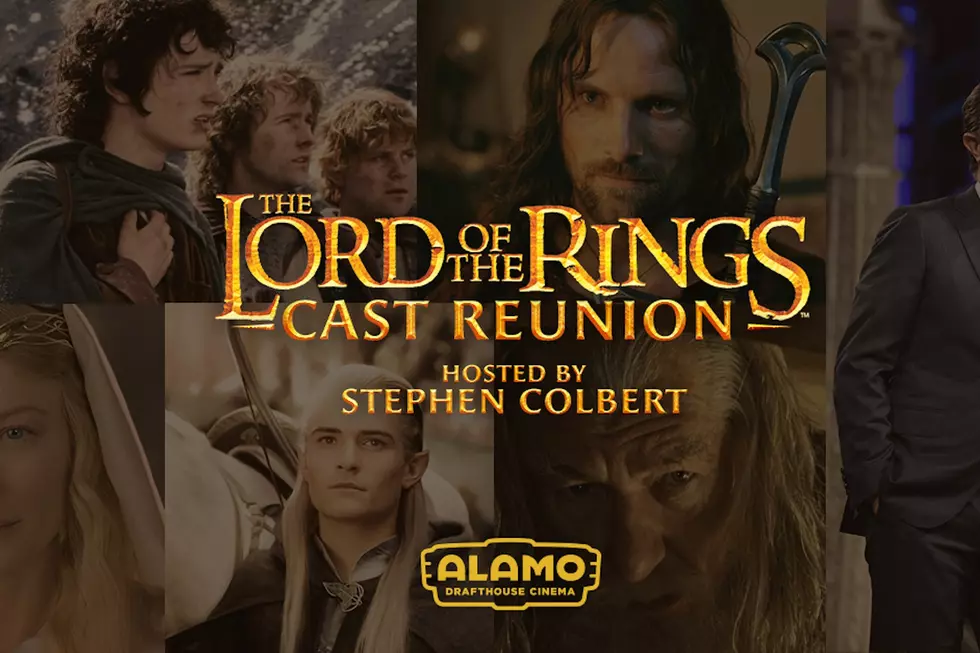
The Lion Stalks Tonight: ‘Roar’ Is One of the Craziest, Most Misguided Movies Ever Made
Almost every Hollywood movie ends with a disclaimer from the American Humane Association promising that “no animals were harmed” during its production. The new re-release poster for Roar, a shocking 1981 oddity about a family whose house is overrun by dozens of jungle cats, riffs on that line in hilarious and unsettling fashion:
“No animals were harmed in the making of this film.
70 cast and crew members were.”
The ranks of the seriously wounded included cinematographer Jan de Bont (who was scalped by a lion and required over 120 stitches) and all the major actors. According to Roar’s press notes, star and director Noel Marshall was hospitalized for six months because of “multiple leg injuries (and also a bout of gangrene)” after an excited lion dragged him around the set. His wife, Tippi Hedren, broke her leg and had her own case of gangrene. Their sons, John and Jerry, each received concussions from the giant cats. And their daughter, Melanie Griffith, was mauled by one of the animals; her injuries required facial reconstructive surgery. But the scene where she was attacked remains in the finished movie anyway. (You can’t fake that kind of production value.)
If Roar had been intended as a cautionary tale about the dangers of wild animals, its existence — and all the carnage and misery that existence wrought on this family for more than a decade — could almost be justified as a noble sacrifice. But Marshall actually wanted Roar to express the opposite sentiment: That lions, tigers, and all the rest are our friends, and that humans and jungle cats can (and should!) live together in harmony. Pay no attention to the festering wounds and panic-stricken looks on the faces of the actors. That’s just for show! Maybe to you, the uneducated layman, it looks like the cats are seconds away from devouring these people. In fact, everyone’s happy and enjoying each other’s company and not at all afraid of getting clawed to death!
That Grand Canyon-sized divide between intention and impact makes Roar maybe the most misguided movie ever made. I am trying to think of another movie with a wider disconnect between altruistic conceit and horrific execution and coming up empty. I have a hard time even conceiving of a hypothetical film that would be more misjudged and ill-considered. If John Carpenter’s Halloween had been billed as an inspiring celebration of the magic of trick-or-treating, that might come close. Or perhaps a public service announcement about the dangers of heroin loaded with graphic footage of junkies O.D.ing that ended with all the survivors encouraging viewers to try heroin. Or maybe if someone tried to promote the safety of air travel with a promotional video that consisted entirely of horrific plane crashes. Maybe. But the plane crash footage would have to be really horrific, and it would have to end with some kind of “reassuring” disclaimer about how almost everyone onscreen survived.
Roar’s story goes something like this: Hank (Noel Marshall) is a wildlife expert living in Africa with a crazy menagerie of lions and tigers (but no bears, though there are some elephants and a couple cheetahs and leopards, oh my). His family — wife Madelaine (Hedren), daughter Melanie (Griffith), and sons John and Jerry (John and Jerry Marshall, respectively) — come for a visit (they are apparently not insane or stupid enough to live full-time with 130 jungle cats). Hank’s supposed to be home to greet everyone when they arrive, but he’s called away on an emergency just before the wife and kids show up to a man-eating welcoming party. The lions chase the family around the house for a while, terrifying the children (with good reason) until Hank returns and explains that everything is fine. And then it is! Hallelujah.
But while Hank (and a hilariously cheerful score) insist that his kids shouldn’t be scared of the lions, it’s pretty clear based on the evidence onscreen that they absolutely should. There doesn’t look like there’s much acting going on; not from the lions who swipe and swat at each other, climb over the furniture, and even raid the family fridge, or from the humans, whose genuine fright constantly peaks out through their pained smiles. They look like hostages who are being forced to play roles at gunpoint. Roar’s ostensible message is one of peaceful interspecies cohabitation, but that message is contradicted by scene after scene of lions wrecking things, eating things, jumping on things, and generally scaring the crap out of everyone they meet.
On a technical level, the movie is well made; Jan de Bont became one of Hollywood’s biggest cinematographers and directors (he made Speed and Twister), and he provides Roar with some beautiful nature photography. And unless you live in a game preserve you’ll never have another opportunity to see many lions and tigers in one place. Watching their natural behavior and interactions is fascinating. Plus, the fact that it’s Tippi Hedren — the star of Alfred Hitchcock’s The Birds — running from (or occasionally falling in love with) these wild animals makes the whole thing even more surreal.
The disclaimers at the end of Roar encourage the audience to protect African wildlife, along with some suggested actions viewers can take to help. They include “Show your disgust with anyone who buys or owns furs or ivory,” and “If at all possible, plan a trip to an African country with a good conservation record.” This seems like very sound advice. But maybe don’t give your house over to 130 jungle cats. That’s probably a bad idea.
Roar opens this Friday in New York, Los Angeles, Austin, Minneapolis, Washington DC, and Houston. For full list of upcoming playdates, go to Drafthouse Films’ official site.
More From ScreenCrush









